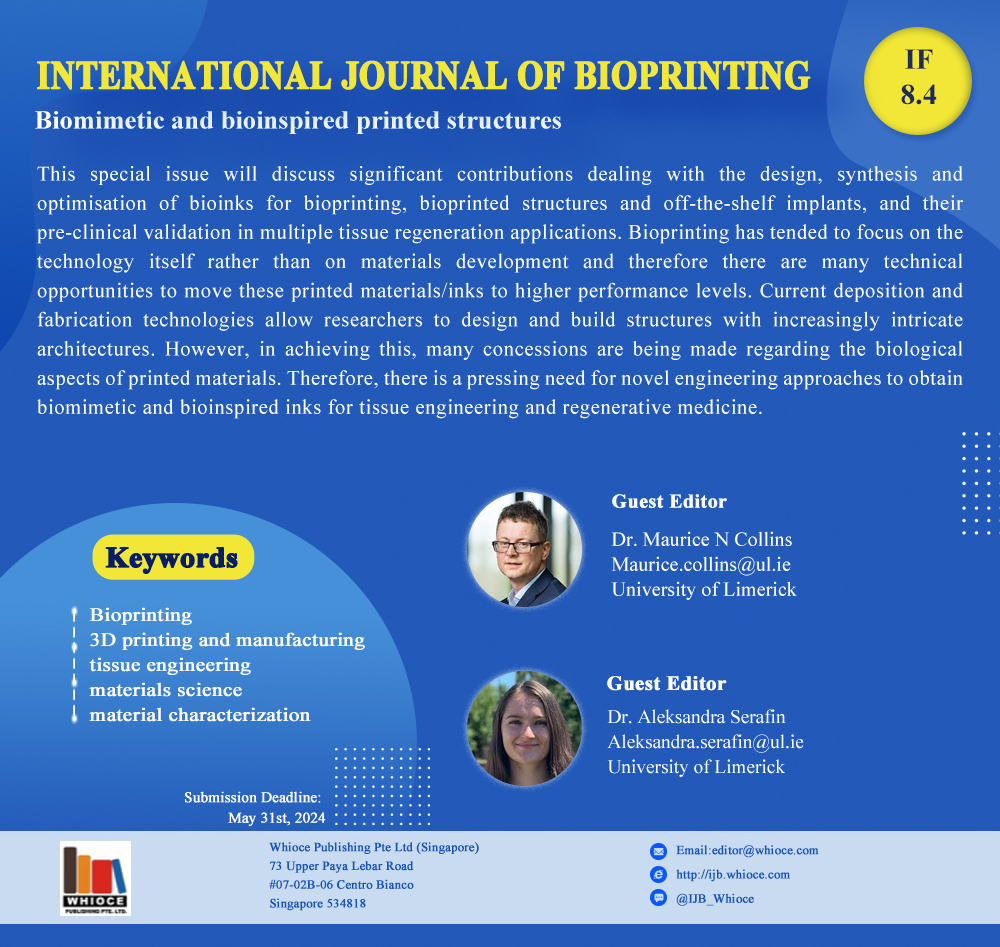
School of Engineering and Bernal Institute, University of Limerick, Limerick, IrelandThe development of bioinks for 3D bioprinting; The development of multifunctional nanomaterials and immunomodulatory materials as well as fundamental 3D tissue scaffold and hydrogel work

This special issue will discuss significant contributions dealing with the design, synthesis and optimisation of bioinks for bioprinting, bioprinted structures and off-the-shelf implants, and their pre-clinical validation in multiple tissue regeneration applications. Bioprinting has tended to focus on the technology itself rather than on materials development and therefore there are many technical opportunities to move these printed materials/inks to higher performance levels. Current deposition and fabrication technologies allow researchers to design and build structures with increasingly intricate architectures. However, in achieving this, many concessions are being made regarding the biological aspects of printed materials. Therefore, there is a pressing need for novel engineering approaches to obtain biomimetic and bioinspired inks for tissue engineering and regenerative medicine.
Engineered 3D-printed poly(vinyl alcohol) vascular grafts: Impact of thermal treatment and functionalization
3D printing collagen type IV for corneal endothelium transplantation
Antibacterial compounds-incorporated functional biomaterials for chronic wound healing application via 3D bioprinting: The mechanism of action
Bioprinting of wearable sensors, brain-machine interfaces, and exoskeleton robots
3D-printed variable stiffness tissue scaffolds for potential meniscus repair


